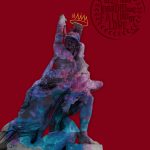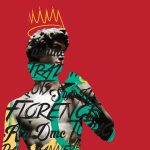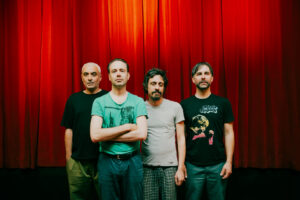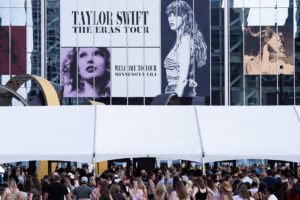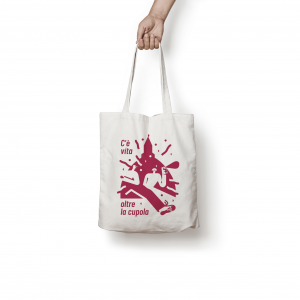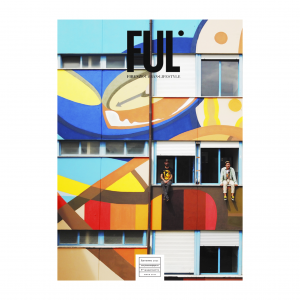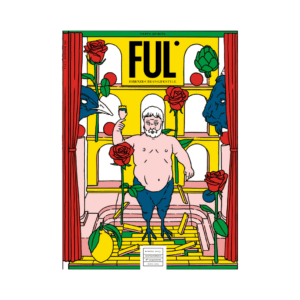L’esperienza di un gruppo di studenti americani a Firenze per studiare l’influenza dell’hip hop nella culla del Rinascimento.

Studiare l’incontro tra l’hip hop e il Rinascimento non è un argomento che molti avrebbero scelto. Ma per 20 studenti di vari istituti, è proprio quello che è successo.
L’hip hop si definisce come una subcultura musicale dal ritmo stilizzato che comunemente accompagna il rap. La definizione di rinascimento è rinascita.
«Volevamo fare qualcosa di diverso, qualcosa di unico, qualcosa di rilevante e di nuovo nel mondo accademico e poi combinarlo con l’esperienza dello studio all’estero. Alla fine abbiamo scelto l’hip hop e pensato all’Italia. E quindi Hip Hop Meets the Renaissance,» dice il dott. Asabi Howard dell’Università Centrale del Nord Carolina (NCCU).
L’obiettivo del programma, individuato dal dott. Lona D. Cobb della Winston-Salem State University (WSSU), era di realizzare un magazine, un notiziario, una performance teatrale che definissero l’hip hop e il suo contesto all’interno del Rinascimento. Una volta arrivati a Firenze, il tempo non era più dalla nostra parte. Il conto alla rovescia è cominciato quando siamo atterrati a Roma.
Contro ogni previsione prima di lasciare il suolo americano, membri della Florida Agricultural and 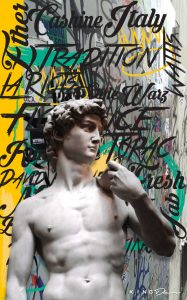 Mechanical University (FAMU), North Carolina Central University (NCCU), Winston-Salem State University (WSSU), e dell’Università del Maryland – College Park (UMD) sono diventati parte di quel 5 percento di studenti afroamericani che vanno a studiare all’estero, secondo le statistiche 2012-2013 dell’Associazione degli Educatori Internazionali.
Mechanical University (FAMU), North Carolina Central University (NCCU), Winston-Salem State University (WSSU), e dell’Università del Maryland – College Park (UMD) sono diventati parte di quel 5 percento di studenti afroamericani che vanno a studiare all’estero, secondo le statistiche 2012-2013 dell’Associazione degli Educatori Internazionali.
Molti di noi non avevano mai viaggiato fuori dagli Stati Uniti e questa era la nostra occasione per rendere orgogliosi di noi stessi e gli altri.
Ogni giorno avevamo lezioni di fotografia a cura di Robert Reeder, ex collaboratore del Washington Post, lezioni di italiano da parte di David Cantina della Scuola Toscana di Firenze e hip hop con Will Boone, professore associato alla Winston-Salem State University. Questi tre corsi sono stati il nostro pane quotidiano – o meglio, pane, aceto balsamico e olio d’oliva.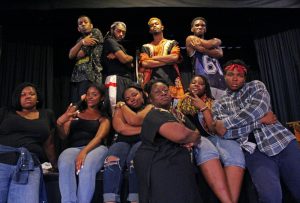
Il corso di fotografia ci ha insegnato a scattare dall’angolazione migliore e quali sono le regole di composizione per fotografare il nostro pubblico. Le immagini sono servite per dare vita al nostro magazine e il corso ci ha dato gli strumenti per essere accattivanti anche nei video clip.
Studiare l’italiano ci ha dato le competenze base per sopravvivere una volta catapultati nella cultura fiorentina. Abbiamo imparato a fare domande per approfondire la conoscenza del territorio, condurre interviste o quantomeno essere in grado di chiedere l’aiuto di un traduttore. E ovviamente, riuscire a cavarcela in giro per la città.
Le lezioni di hip hop… be’ quelle avevano un ritmo tutto loro. In quanto studiosi, abbiamo imparato che è fondamentale fare le domande giuste anche solo per cominciare a definire l’hip hop e capire da dove viene. È importante capire quanto l’hip hop abbia influenzato ciascuno degli studenti che provengono da una comunità afro-americana e come abbia influenzato la terra della rinascita – del Rinascimento. «Noi, la gente dell’hip hop,» siamo qui per esplorare, capire, e dichiarare che l’hip hop esiste in ogni dove – anche a Firenze. Non molti studenti possono dire di aver usato un nightclub, come lo YAB, per uno studio accademico.
Se queste attività erano alla base della nostra esperienza, le nostre facoltà ci hanno fornito anche altri strumenti per capire come diventare dei giornalisti internazionali e come trovare il modo di incorporare l’hip hop nei nostri progetti. Con l’aiuto delle lezioni fatte, siamo stati in grado di identificare l’impatto dell’hip hop sulla comunità fiorentina. Siamo andati in su e giù per la città per scoprire le controversie suscitate da un artista come Clet Abraham, o le nuove regole della street art, come l’hip hop si è europeizzato e anche come la moda italiana sia stata influenzata dall’hip hop. Questi sono solo alcuni dei temi del nostro notiziario, della performance teatrale e del magazine a cui gli studenti hanno lavorato con impegno e inesauribile passione.
 «È stato interessante vedere l’influenza che l’hip hop ha sul resto del mondo. Prima di vederlo con i miei occhi, non avrei mai pensato che agli italiani potesse piacere l’hip hop; ma dopo un mese, posso dire che ascoltiamo gli stessi artisti. La musica e le parole hanno lo stesso effetto sulle persone in tutto il mondo» dice Saundrina Smith di FAMU.
«È stato interessante vedere l’influenza che l’hip hop ha sul resto del mondo. Prima di vederlo con i miei occhi, non avrei mai pensato che agli italiani potesse piacere l’hip hop; ma dopo un mese, posso dire che ascoltiamo gli stessi artisti. La musica e le parole hanno lo stesso effetto sulle persone in tutto il mondo» dice Saundrina Smith di FAMU.
Firenze e l’hip hop non mi hanno solo cambiata come giornalista, ma come membro della razza umana. Mi hanno insegnato che c’è un mondo intero al di fuori del perimetro della mia città, della mia università, della mia classe. Vivete come i fiorentini – lavorate sodo, condividete con gli altri e godetevi la vita davanti a un bel bicchiere di vino.
Shannon Clash
>>>>English original version
Studying hip hop meets the Renaissance was never a subject most would put together. But for 20 students, coming from four different institutions, that’s exactly what we did.
The definition of hip hop is a subculture of stylized rhythmic music that commonly accompanies rap. And the definition of renaissance is the rebirth.
«We wanted to do something different, something unique, something that was relevant, something new in the world of accademia and then bring that all together with that old study abroad experience. So hip hop was it and we thought of Italy. So it had to be Hip-Hop Meets the Renaissance,» says Dr. Asabi Howard of North Carolina Central University (NCCU).
The goal of the program, implemented by Dr. Lona D. Cobb of Winston-Salem State University (WSSU), was to produce an editorial magazine, a journalism newscast, theatrical performance, define hip hop and it’s context with the Renaissance. Once in Florence, time was no longer on our side. The clock was ticking as soon as we landed in Rome.
Beating the odds before we left United States soil, members from Florida Agricultural and Mechanical University (FAMU), North Carolina Central University (NCCU), Winston-Salem State University (WSSU), and the University of Maryland – College Park (UMD), would become a part of the 5 percent of African American students who study abroad, according to the Association of International Educators in 2012-2013.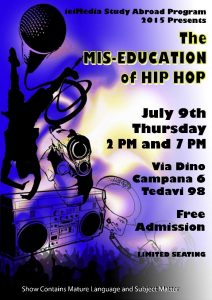
As students, many of whom had never traveled out the U.S, this was our time to make others, but, most importantly, ourselves proud. Keeping some structure, daily photography class was taught by Robert Reeder, Washington Post retiree, Italian class was taught by David Cantina of the Scuola Toscana in Florence and Hip Hop class was taught by Will Boone, associate professor at Winston-Salem State University. These three courses would be the bread and the butter – let me rephrase, the bread, balsamic vinaigrette and olive oil of the program.
Photography introduced us to what angles and rules of composition would be best for our audience. The images would be used to inject life into the editorial magazine to explain our experience and give us insight on how to be visually appealing through stage decorations and video clips in the newscast.
The Italian language taught us the basic survival skills we needed as we jumped into the culture of Florence. It provided the ability to ask questions to emphasize our knowledge about the land, conduct interviews with our subject or at least know how to ask for a translator. And of course, assist with helping us get around.
And Hip Hop…Hip Hop class beat to its own drum. As scholars, we learned that we had to ask the right questions to even begin to define what hip hop is and where it came from. It’s important to understand how hip hop personally affected us as students from an African American community in America and how hip hop influenced or was influenced by the land of a new beginning – the Renaissance. «We the People of Hip Hop,» we’re here to explore, understand, and declare that hip hop lives in all walks of life – even in Florence. Not many students, I know can say that they used a nightclub, such as YAB, for a scholarly analysis.
After providing the base of our experience, we were divided into disciplines that could enhance and compliment each other in the development of our projects. Our distinguished faculty provided us with the tools to understand how to be international journalist and to identify ways to incorporate hip hop into our projects. With the help of our previous classes in Italy, we were able to identify hip hop’s impact within the Florence community. We would travel far and wide to learn about controversies such as Clet Abraham’s artistic experience, the new regulation of Street Art, how Hip Hop had been Europeanized and even how Italian fashion had been influenced by hip hop. These are only a few events of the 15 minute newscast, 75 minute theatrical performance, and 8 to 10 page editorial magazine that students worked diligently and timelessly to research, shoot, edit, design and write. It was all hands on deck and we are excited to say that we did it.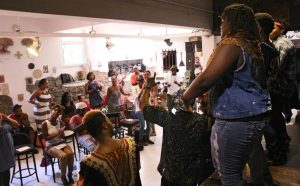
«It was interesting to see the influence hip hop has on the rest of the world. Before witnessing its influence, I never thought that Italians really enjoyed hip hop; but after a month, I saw that the same artists that we listen to in the club are the same artists Italians play in their club. The music and the words have the same effect on individuals internationally,» says Saundrina Smith of FAMU.
To say the least, Florence and hip hop has not only changed me as a journalist, it has changed me as a member of the human race. It has shown me that there is more to the square perimeters that surround my hometown or the University of Maryland or the classrooms that prepared me for this moment. Live like the Florentine’s do – work hard, fellowship together and enjoy life over a glass of wine, of course.
Shannon Clash
Photography: ieiMedia Photo
Designer’s images © Devin Laws
Instagram: @TribeLyfe919
Twitter:@KINGDlaws


